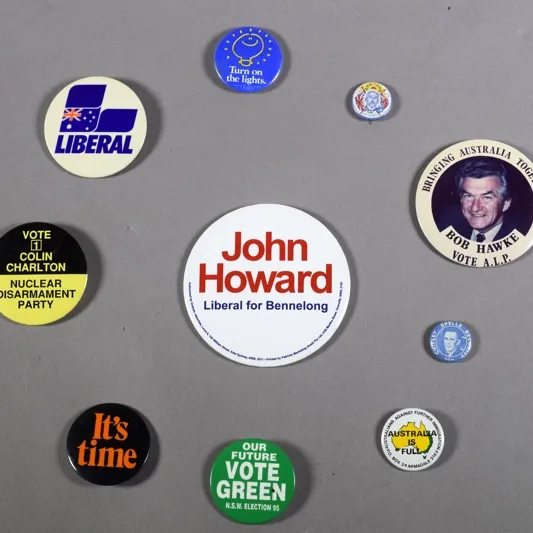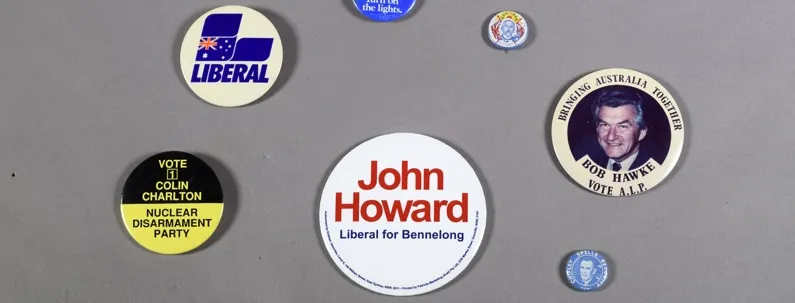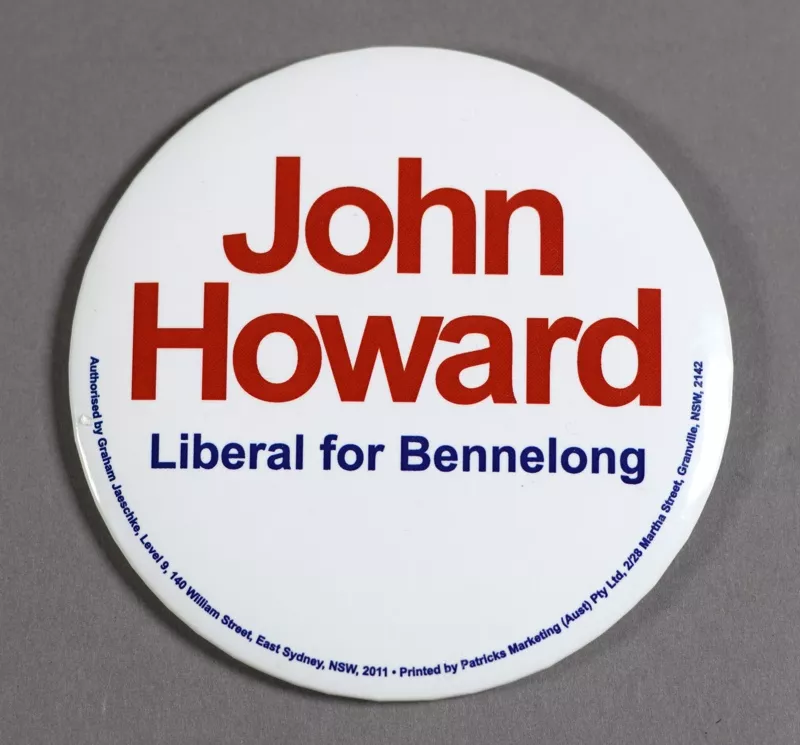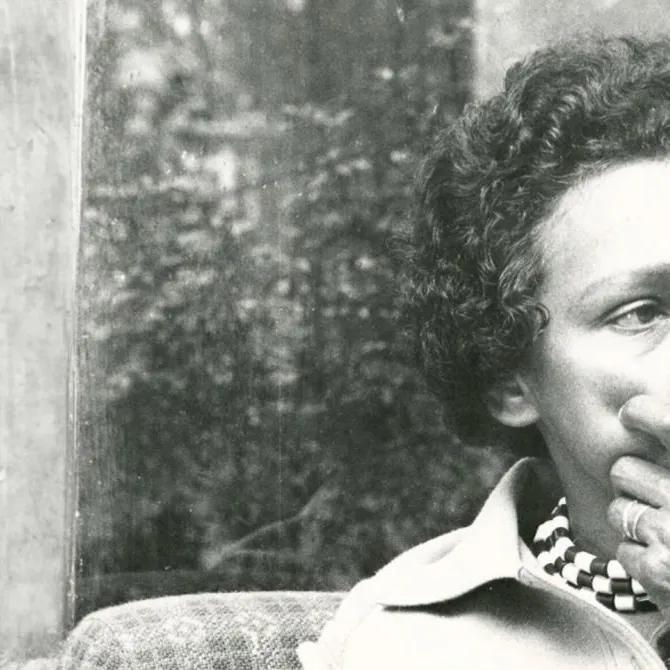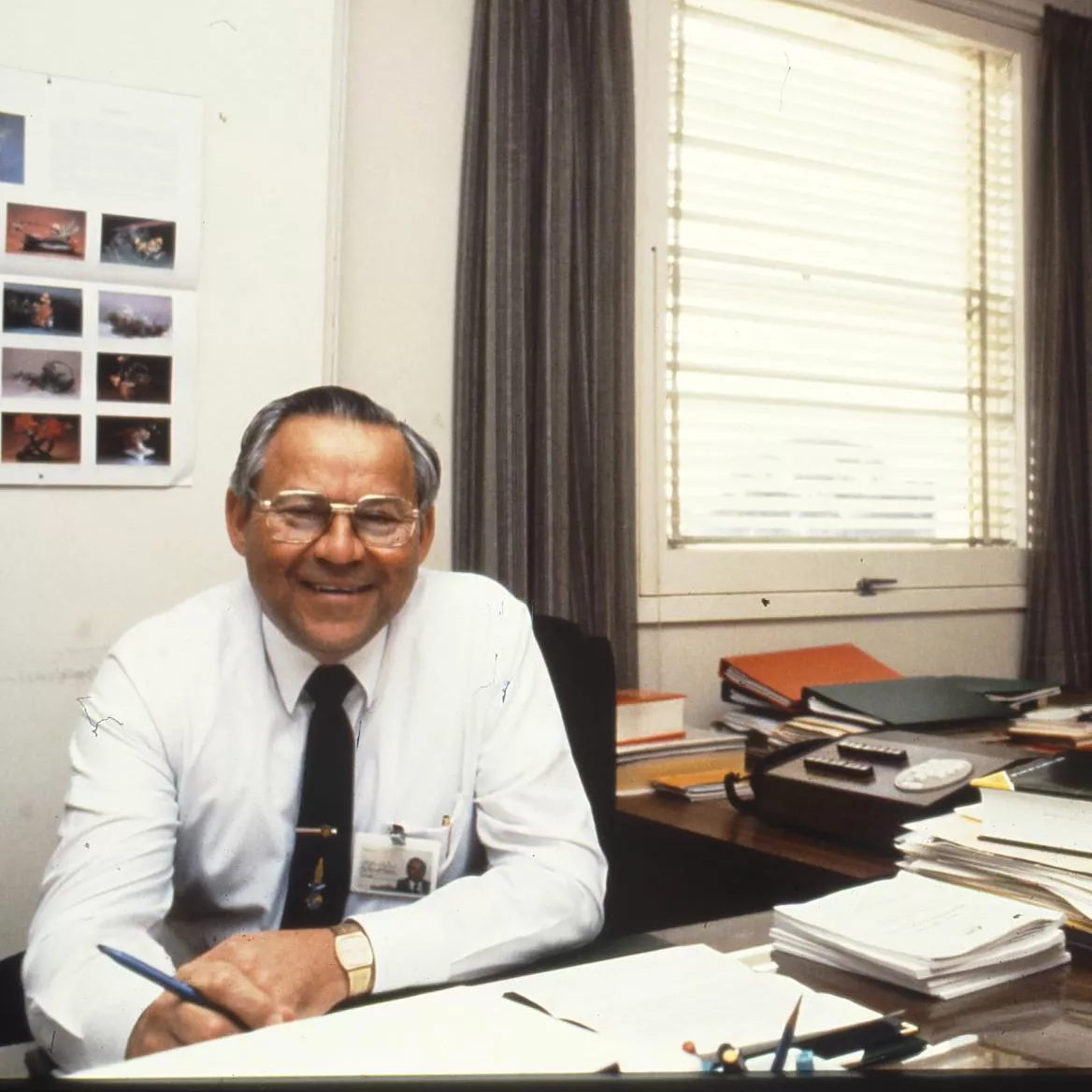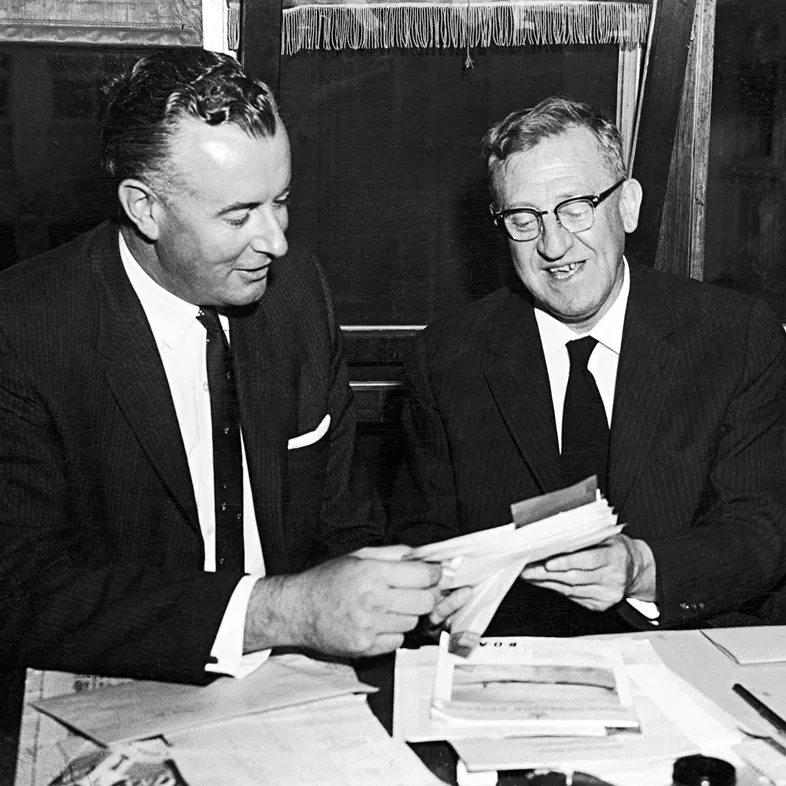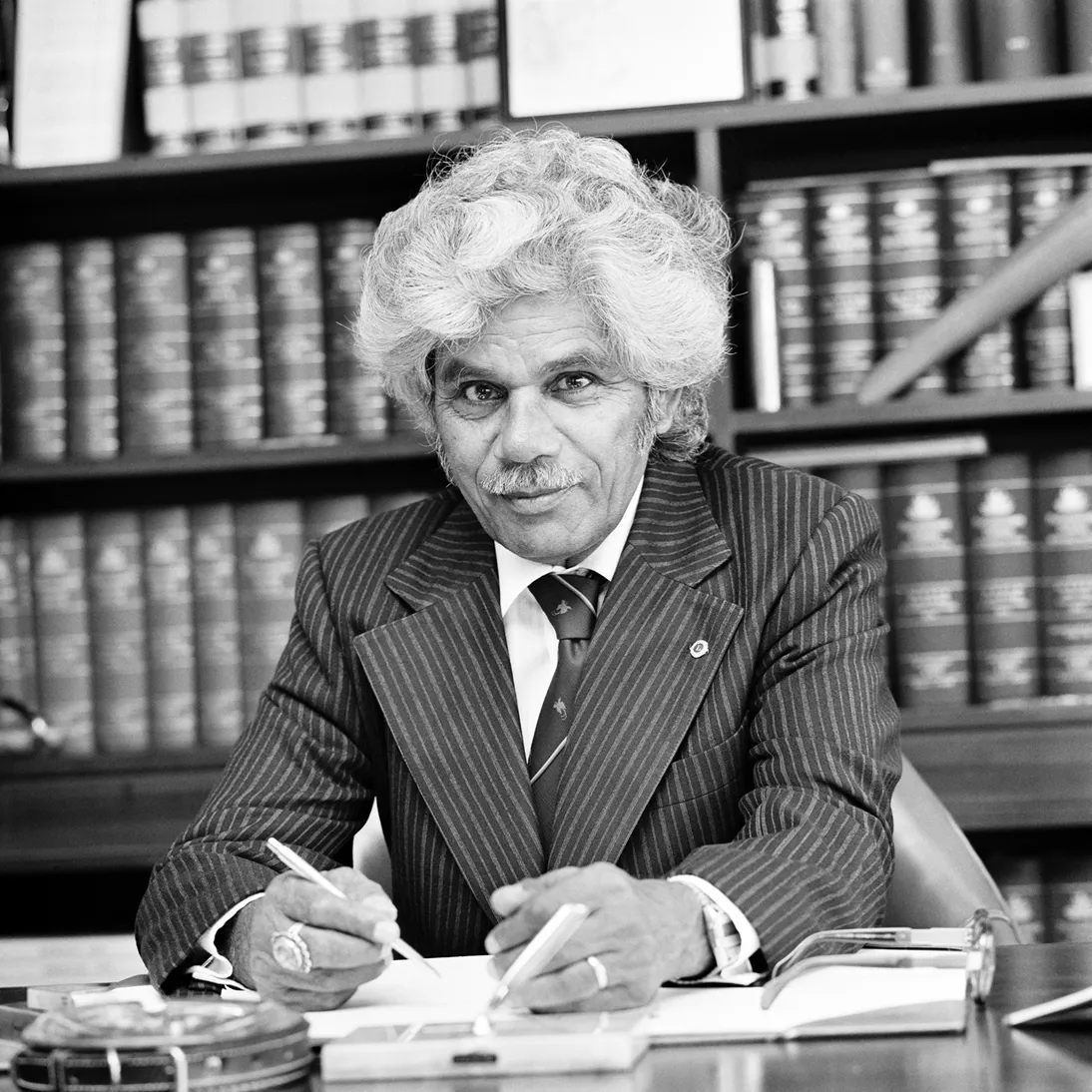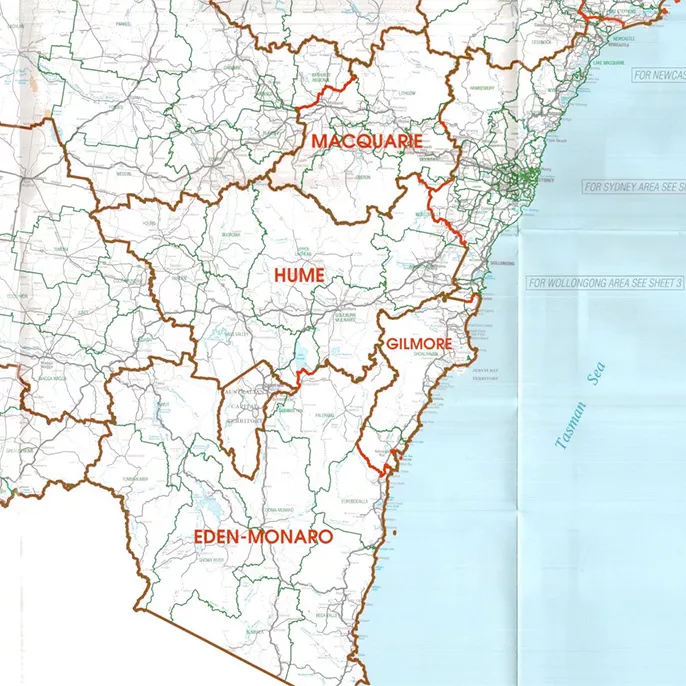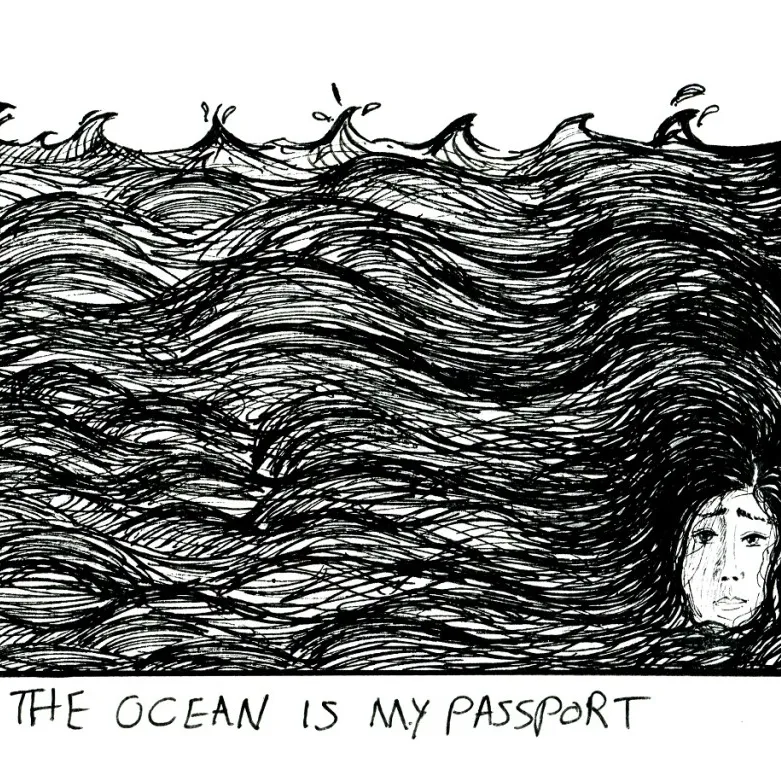Why wear a badge at election time?
- DateWed, 25 May 2016
Democratic elections are about political parties persuading the electorate that their policies are the best ones to vote for.
That persuasion takes many forms: TV, radio and internet advertising, as well as candidates wearing out their shoe leather on the streets. For supporters, a political campaign can have real meaning and relevance to their lives, and during every election campaign people come out and fly the flag for the party or candidate of their choice. Elections aren’t just about voting; they can also be about debate, discussion and, sometimes, argument.
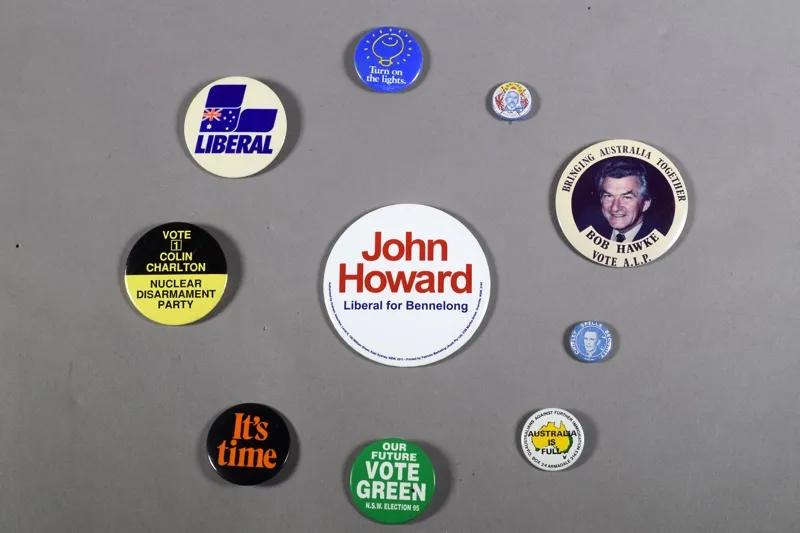
Badges are cheap to produce, easy to wear, can carry simple messages and can be mass-produced. For more than a century, Australians have produced and worn badges to protest or support causes and candidates, and even now in the digital age you can always rely on seeing campaigners wearing their badges with pride to show off their affiliation.
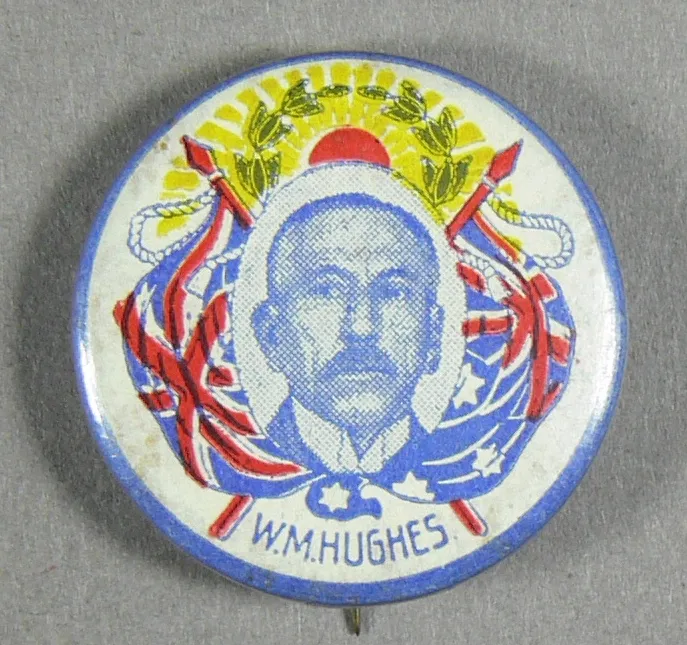
Campaign badges have not changed much for the last hundred years. William Morris Hughes, known as Billy, was prime minister from 1915 to 1923, and a member of parliament for over fifty years. We don’t know exactly which election this badge was made for, but it tells us that the tried-and-tested method of getting a good photo of the candidate and wearing it on a badge is a campaign strategy that has survived for more than a century.
Prime ministers aren’t just running for the Lodge. In the Westminster system, party leaders are also local representatives and have a seat in the parliament. The prime minister is always a member of the House of Representatives. This badge shows that side of a prime minister’s political life, as it urges voters in the seat of Bennelong, in Sydney’s northern suburbs, to return Prime Minister John Howard as the local member.

Bob Hawke won the 1983 election on a platform of uniting the country and establishing a new consensus. “Everything we do as a government,” he said, “will have the one great goal - to reunite this great community of ours, to bring out the best we are truly capable of, together, as a nation, and bring Australia together to win our way through the crisis into which the policies of the past and the men of the past have plunged our country.” This badge shows that message. Hawke’s campaign to bring Australia together resonated with voters who wanted an end to what they saw as the divisive politics of the Fraser era. Hawke and Labor won in a landslide victory, and Hawke remains one of Australia’s most popular leaders, famous for his consensus-based, businesslike approach.
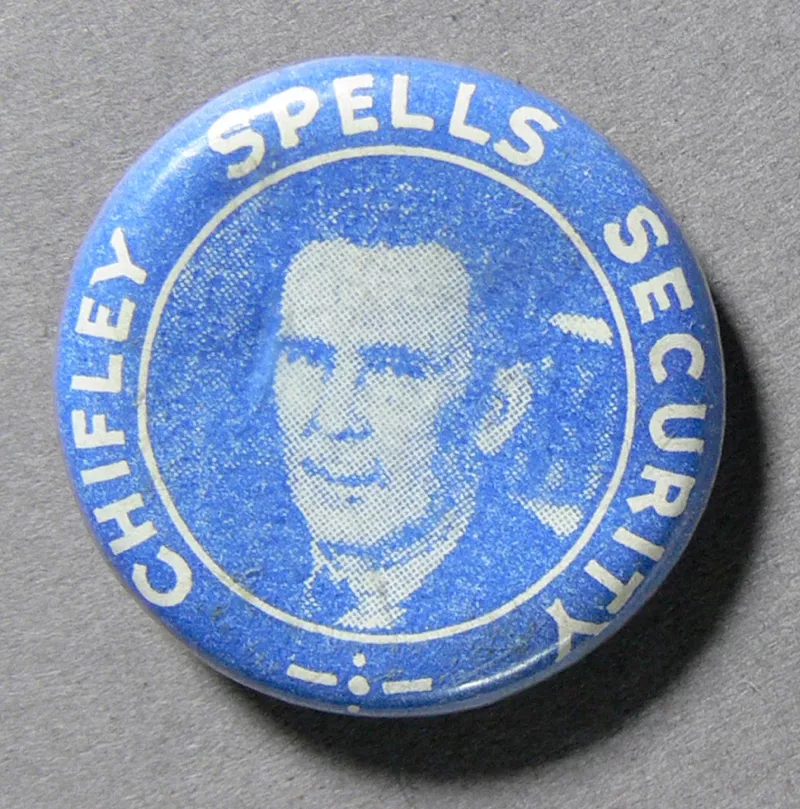
Rarely seen without his trademark pipe, the affable ex-train driver Ben Chifley was a secure and familiar sight to Australians in the last days of the Second World War and its aftermath. His campaign slogan ‘Chifley Spells Security’ capitalised on his reassuring presence and his popularity as a leader. This is a theme repeated time and again in Australian political campaigns, with a focus on a popular party leader and a simple message of security, stability and prosperity in their hands. Australians re-elected the Chifley government in 1946, but in 1949, despite his personal appeal, Chifley lost office and the Menzies years began.
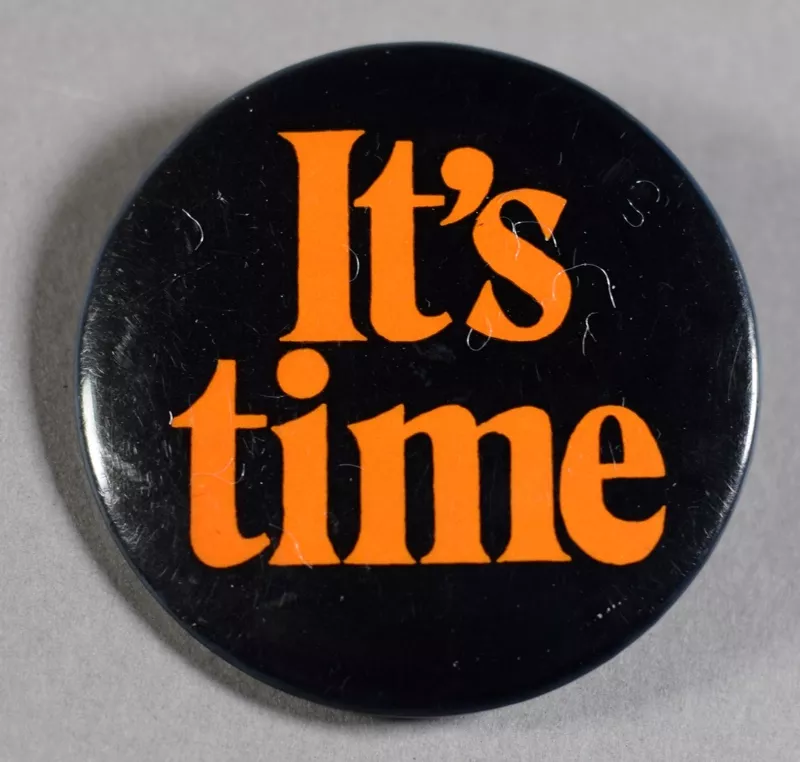
The ‘It’s Time‘ campaign of 1972 is probably the most famous election campaign in Australian history. After 23 years in opposition, the Australian Labor Party won power under its charismatic leader Gough Whitlam. The simple slogan was created by ad executive Paul Jones of agency Hansen-Rubensohn–McCann-Erickson. Its impact was tremendously powerful, and people still remember it today. The campaign saw Labor targeting younger women and ethnic voters, groups of voters they had traditionally failed to capture. The election saw Whitlam become prime minister and leader of a reformist government. There would be trouble ahead, but on the night of 2 December 1972, all Australians knew that it was, finally, Time.
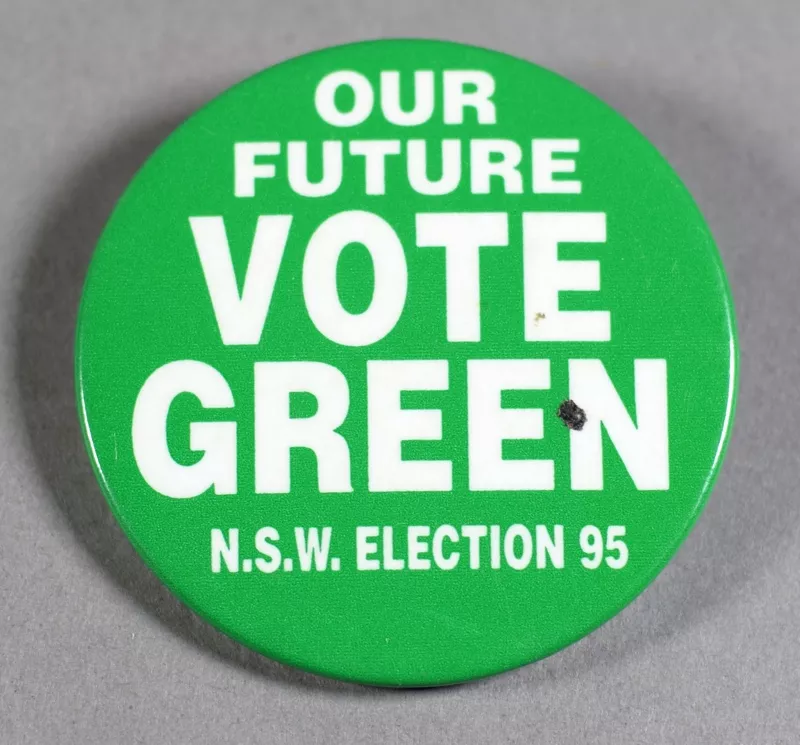
As environmental issues became more prominent from the 1970s onwards, green parties all over the world began to see increased support. Issues such as the Lake Pedder and Gordon-below-Franklin dams in Tasmania galvanised the environmental movement into action, and throughout the 1980s and 1990s Green candidates representing state-based groups were having some success in elections across the country. The Australian Greens were formed in 1996 by an alliance of these state parties, and in that year Dr Bob Brown was elected to the Senate. In 2016, the Greens have nine Senators and one House of Representatives seat and are the most successful minor party in Australian history, winning a higher vote share and number of seats than any third party since the early days of Federation.
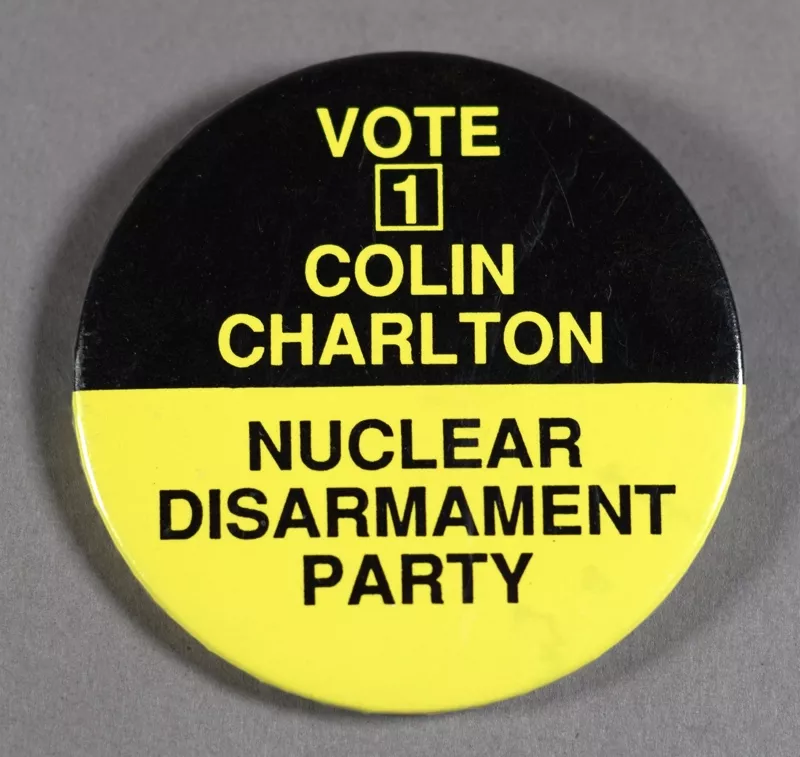
The early 1980s were a troubled period in global politics. The heightened tensions of the Cold War had declined over the previous decade, but increased hawkishness in American and Soviet governments, and their allies, brought the possibility of a devastating nuclear conflict back into public conciousness. It was this climate that produced the Nuclear Disarmanent Party (NDP), in favour of ending the arms race and in eliminating nuclear weapons, and against uranium mining and export. The NDP had some success in both state and federal elections. In 1984 their lead Senate candidate in New South Wales was rock band Midnight Oil’s lead singer, Peter Garrett, who won a considerable primary vote but was ultimately defeated on preferences. This badge represents their story and dates from the 1988 NSW state election.
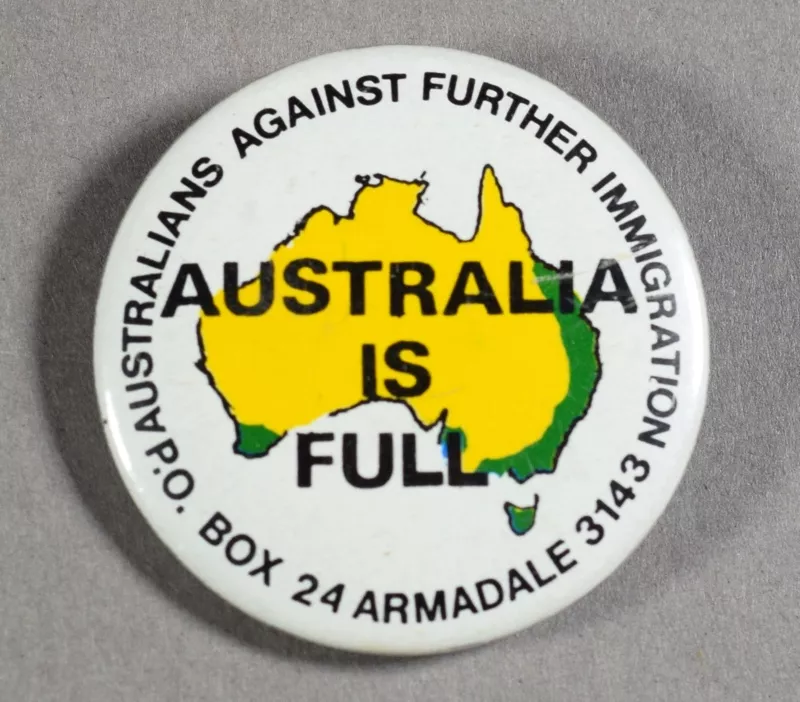
Australia has faced a strong and at times emotive debate about immigration since long before Federation. The White Australia Policy saw many people excluded on the basis of race, although this law was never applied explicitly on a racial basis. After the Second World War, migration schemes brought hundreds of thousands of new migrants, including from Eastern Europe and the Mediterranean for the first time. Opposition to immigration, or favouring some restrictions, remains a goal of a number of Australian parties and movements. Often these restrictions are not based on race or demography, but on the basis of the environment and economic factors. This badge represents one of those groups and dates from the mid-1990s.
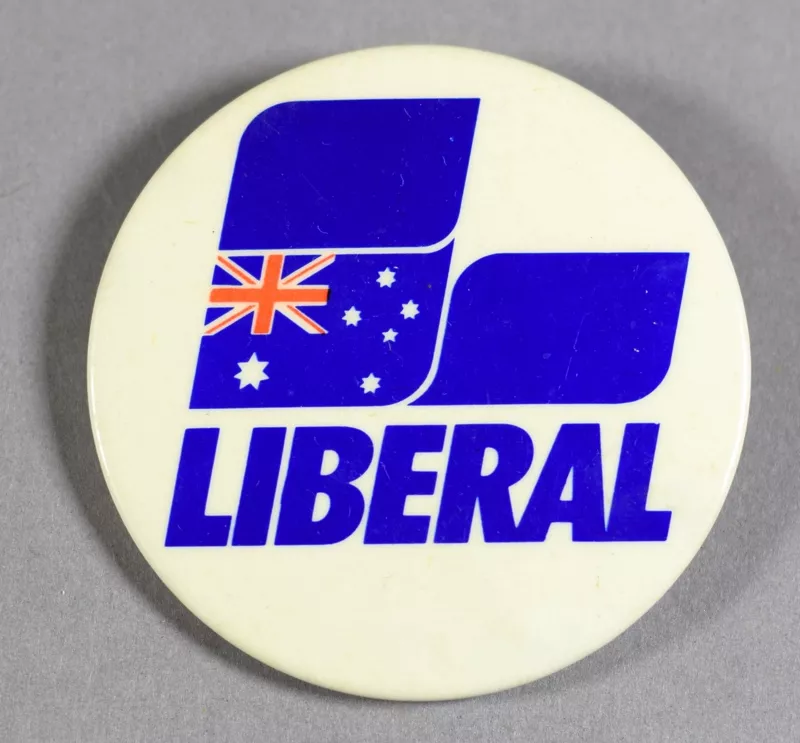
Not all campaigning is about a specific message. Sometimes, people just want to show their colours and beliefs and represent their side of politics. This badge, dating from the mid-1990s, is for supporters of the Liberal Party to demonstrate their affiliation. This kind of badge is often worn by party supporters outside polling stations, along with distinctive T-shirts or headwear that tell voters which party they represent. Some people are proud of their particular chosen party and for them, wearing the party’s logo as a badge is an act of devotion to their cause.
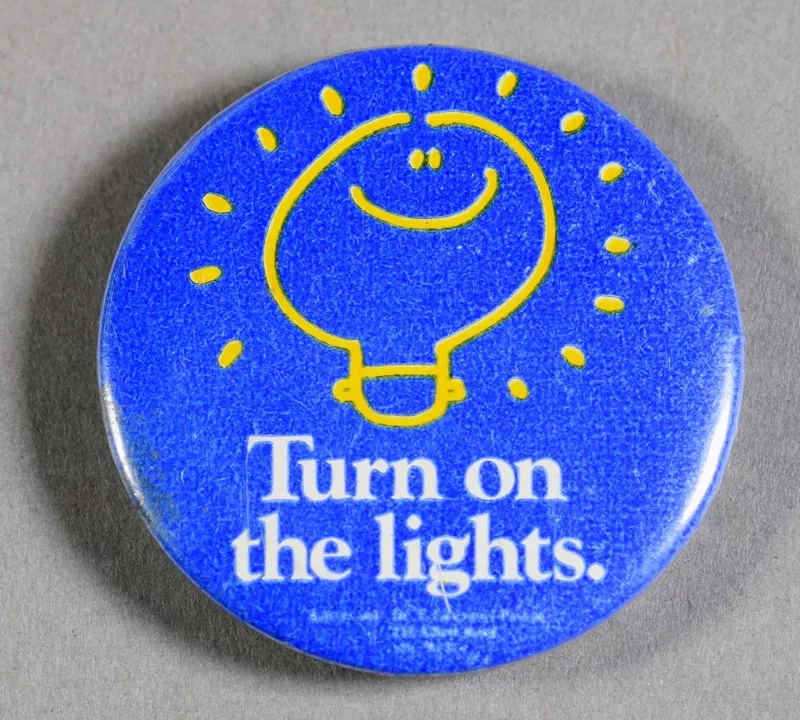
This Liberal badge from the 1975 election was a response to the successful ‘It’s Time’ campaign by Labor three years earlier. The ‘Turn on the Lights’ campaign, like its counterpart from 1972, featured a simple slogan and a campaign song sung by a popular personality, in this case Renee Geyer. ‘Turn on the Lights’ was coined by ad agency Masius Australia. The agency claimed it was successful because it “interpreted the Liberal promise of revival in suitably evocative terms” and had a “positive” connotation in contrast to Labor’s negative-focused campaign against Malcolm Fraser. The election saw a landslide win for Fraser and the Coalition, giving them a majority in both houses of Parliament.

